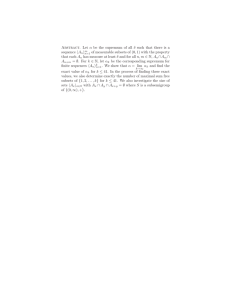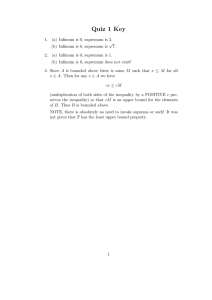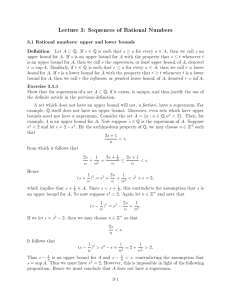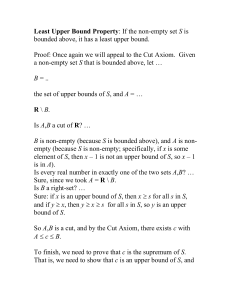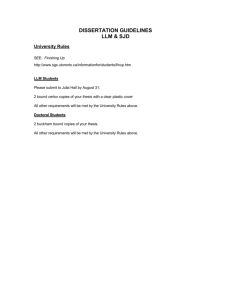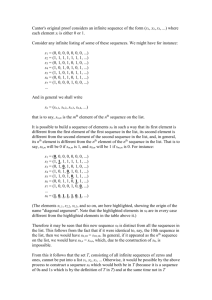nth roots of positive numbers
advertisement
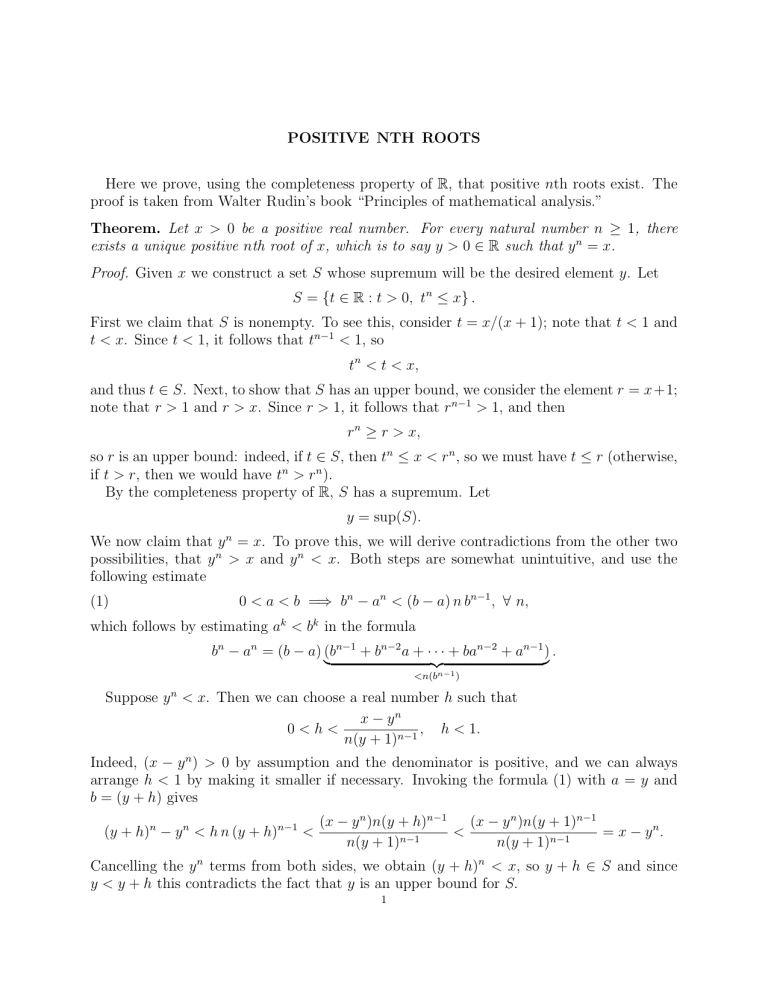
POSITIVE NTH ROOTS
Here we prove, using the completeness property of R, that positive nth roots exist. The
proof is taken from Walter Rudin’s book “Principles of mathematical analysis.”
Theorem. Let x > 0 be a positive real number. For every natural number n ≥ 1, there
exists a unique positive nth root of x, which is to say y > 0 ∈ R such that y n = x.
Proof. Given x we construct a set S whose supremum will be the desired element y. Let
S = {t ∈ R : t > 0, tn ≤ x} .
First we claim that S is nonempty. To see this, consider t = x/(x + 1); note that t < 1 and
t < x. Since t < 1, it follows that tn−1 < 1, so
tn < t < x,
and thus t ∈ S. Next, to show that S has an upper bound, we consider the element r = x+1;
note that r > 1 and r > x. Since r > 1, it follows that rn−1 > 1, and then
rn ≥ r > x,
so r is an upper bound: indeed, if t ∈ S, then tn ≤ x < rn , so we must have t ≤ r (otherwise,
if t > r, then we would have tn > rn ).
By the completeness property of R, S has a supremum. Let
y = sup(S).
We now claim that y n = x. To prove this, we will derive contradictions from the other two
possibilities, that y n > x and y n < x. Both steps are somewhat unintuitive, and use the
following estimate
(1)
0 < a < b =⇒ bn − an < (b − a) n bn−1 , ∀ n,
which follows by estimating ak < bk in the formula
bn − an = (b − a) (bn−1 + bn−2 a + · · · + ban−2 + an−1 ) .
{z
}
|
<n(bn−1 )
Suppose y n < x. Then we can choose a real number h such that
x − yn
0<h<
, h < 1.
n(y + 1)n−1
Indeed, (x − y n ) > 0 by assumption and the denominator is positive, and we can always
arrange h < 1 by making it smaller if necessary. Invoking the formula (1) with a = y and
b = (y + h) gives
(y + h)n − y n < h n (y + h)n−1 <
(x − y n )n(y + h)n−1
(x − y n )n(y + 1)n−1
<
= x − yn.
n(y + 1)n−1
n(y + 1)n−1
Cancelling the y n terms from both sides, we obtain (y + h)n < x, so y + h ∈ S and since
y < y + h this contradicts the fact that y is an upper bound for S.
1
Now suppose y n > x. Then we define
k=
yn − x
ny n−1
and note that
yn
y
< y.
=
ny n−1
n
Invoking the formula (1) again with a = y − k (which we’ve just shown to be positive) and
b = y, we obtain the estimate
(y n − x) n y n−1
y n − (y − k)n < k n y n−1 =
= y n − x.
ny n−1
Cancelling the y n terms and multiplying by −1, it follows that x < (y − k)n , i.e. that y − k
is an upper bound for S. Since y − k < y this contradicts the property of the supremum
that y is less than or equal to any other upper bound.
Since y n 6> x and y n 6< x, it follows that y n = x.
0<k<
2
